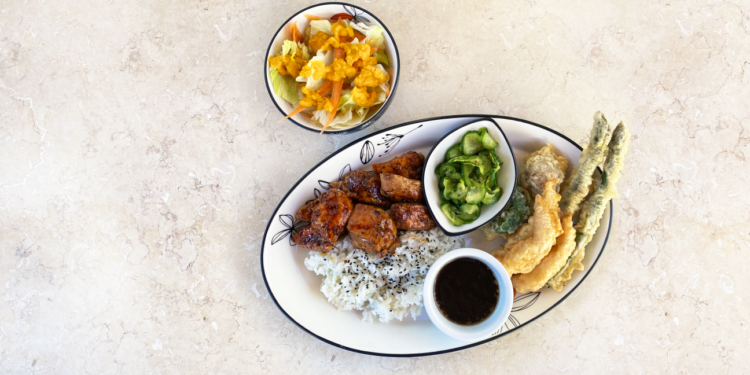When cooking at home, you have to get creative. You can recreate all the delicious foods that you used to eat out before we had to shelter in place at home for safety. One of my favorite world cuisines is Japanese food. And because sushi might be a little out of my (or your) cooking level, I wanted to start with a couple of sauce recipes that will help make that chicken dinner into a Japanese teriyaki bento box you so dream about. These sauces and salad dressing will be a way to bring some of the delicious flavors of a bento box into your kitchen and some can be made in bulk to have on-hand for whenever you want to add some flavor to a dish.
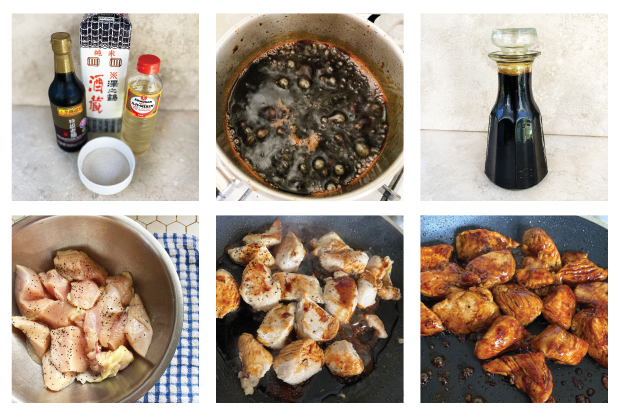
Teriyaki sauce:
This recipe makes about 1½ cups when sauce has been reduced and thickened.
Ingredients:
½ cup sake (you can use dry sherry or rice wine)
½ cup mirin (you can substitute with ½ cup water plus 3 tablespoons of sugar)
½ cup soy sauce
¼ cup sugar
2 tablespoons of honey (to thicken) optional
Instructions:
In a saucepan, combine all the ingredients (I start with sugar and then add liquids to prevent splashing). Bring mixture to a boil and continue stirring until sugar has completely dissolved. Once boiling, lower heat to medium low and cook on simmer for 10-15 minutes until sauce has thickened (note: it won’t be the thickness of honey but also not runny). The sauce will be ready when small bubbles appear. Let cool, then pour into a sterilized jar and keep in the refrigerator for up to 2-3 weeks.
Chicken teriyaki:
Cut your chicken into large bite-sized pieces (I’m using one large skinless chicken breast) and lightly season with salt and black pepper. In a pan, heat oil and cook chicken on each side till it’s golden brown. Remove from pan, wipe pan with paper towel. Bring chicken back to pan and pour teriyaki sauce to coat chicken. You can add extra sauce to serve on the side. The teriyaki sauce also pairs well when cooking salmon or tofu.
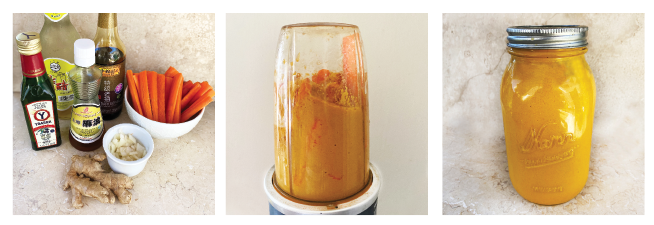
Carrot ginger salad dressing
You know that delicious creamy dressing usually on the salads at Japanese restaurants? Well this recipe is so easy that you will use it as your official dressing from now on. You can make it as thin or thick as you like. Thick can be used as dip for veggies.
Ingredients:
3 medium carrots coarsely chopped (I peeled mine)
½ cup of oil (olive, grape seed or avocado oil)
½ cup peeled, chopped fresh ginger (if you’re new to ginger, start with ¼ cup; I enjoy the taste so ½ cup is great for me). One trick to peeling ginger is to use a spoon, I find it much easier than a peeler.
¼ cup rice vinegar
3 tablespoons chopped onion
1 tablespoon of soy sauce
1 tablespoon of sesame oil
Instructions:
If you blink, you will miss it: place ingredients in a blender or food processor until smooth. Add oil or water depending on how thin or thick you want your dressing. That’s it, you’re done. This will make about 4-5 cups that can be poured into a sterilized jar and kept in the refrigerator for up to 2 weeks.
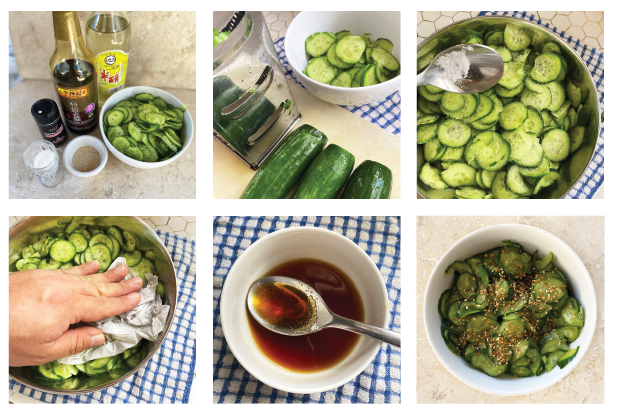
Sunomono (Japanese cucumber salad)
I can never get enough of this salad in my bento box when I go out to eat and after trying the recipe, I never have to go without it. This is a very simple salad that you will want to make in batches so you have extra.
Ingredients:
2-3 Japanese cucumbers or 4 Persian cucumbers (don’t use regular cucumbers as they are too big and also have too much liquid for it to work)
3 tablespoons of rice vinegar
1 tablespoon of sugar
¼ tablespoon of salt
1/3 tablespoon of soy sauce
1 tablespoon of sesame seeds
Instructions:
Slice cucumbers thin (if you have a mandolin slicer or a cheese greater with the slice side, they work great. If not, the regular way works fine, just make sure your slices are thin). Sprinkle with salt and let sit for 5 minutes to have all the liquid come out, then squeeze the cucumbers to remove excess water (don’t be afraid, I use a flat pan and paper towels to press down to get as much of the excess water out as possible).
Mix rice vinegar sugar, soy sauce in a bowl and stir until sugar dissolves. Add to cucumbers and finally sprinkle with sesame seeds (I toasted my sesame seeds since I like the taste, but that is not a necessary step).
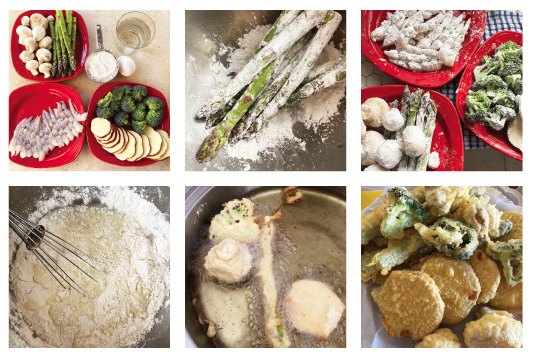
Tempura batter:
This batter will help you make the delicious tempura vegetables and shrimp that accompany any bento box and the light batter is one of my favorites. You should prepare items first and heat your oil before prepping batter.
Ingredients:
1 cup of tempura flower (or all-purpose flour; sift to remove any clumps and to make light and soft)
1 large egg
1 cup of water (the colder the better)
Instructions:
In a medium bowl, gently beat 1 egg until yolk and egg whites are just barely incorporated.
Add the cold water to the egg.
Next, add the flour into the bowl and lightly combine (don’t overmix the batter, clumps are OK, it does not need to have the consistency of cake batter).
The batter is now ready for immediate use. If you are not using it right away, place in the refrigerator for few short minutes (this batter has to be made fresh and used right away).
When using batter, here are some steps to keep in mind:
First, lightly coat vegetables and shrimp in flour before dipping in batter. This helps batter to adhere better.
Once coated, dip items into batter gently, you want a light coating of batter — don’t overdo it.
When frying, make sure your oil is between 340 and 360 degrees. I test my oil with little droppings of batter; they should float up as soon as they hit the oil. If they sink, your oil is not hot enough.
Have a drying rack or a plate with a paper towel to absorb any excess oil. Tempura should be served as soon as it’s cooked to avoid getting soggy and oily.
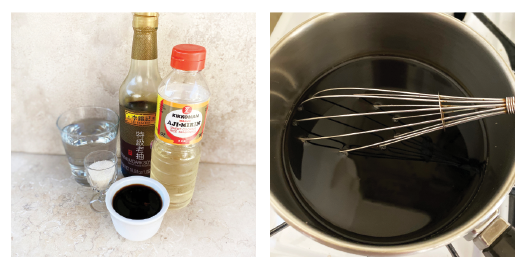
Tempura dipping sauce:
This will make 1½ cups
Ingredients:
1 cup water
4 tablespoons of mirin
4 tablespoons of soy sauce (preferably Shoyu)
1 tablespoon of sugar
Instructions:
In a small pot, pour water, mirin, soy sauce and sugar, bringing sauce to a light boil on medium heat. Remove from heat and let cool, then pour into sauce bowl. You can store leftover sauce for up to 3 weeks.
The last thing you need to finish this meal is some steamed rice. Serve and enjoy!



